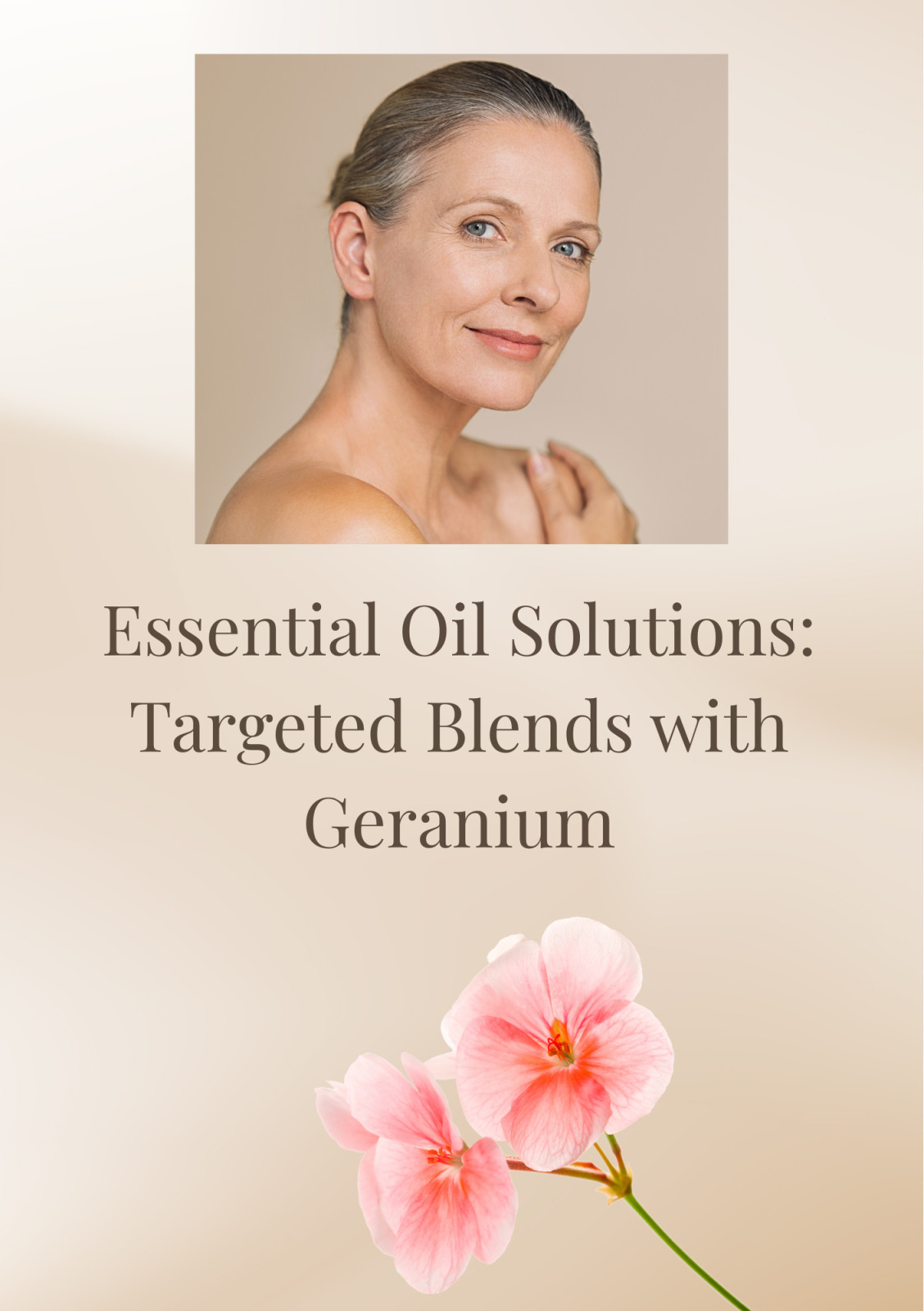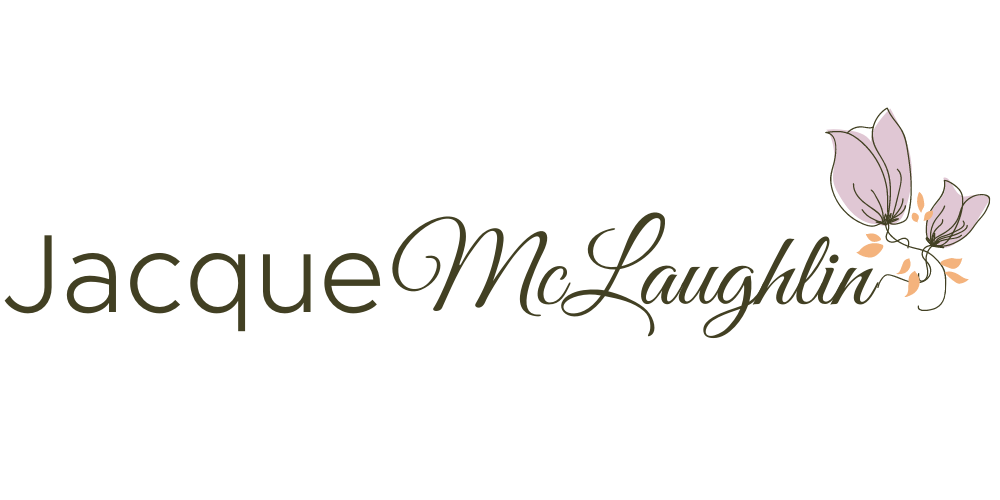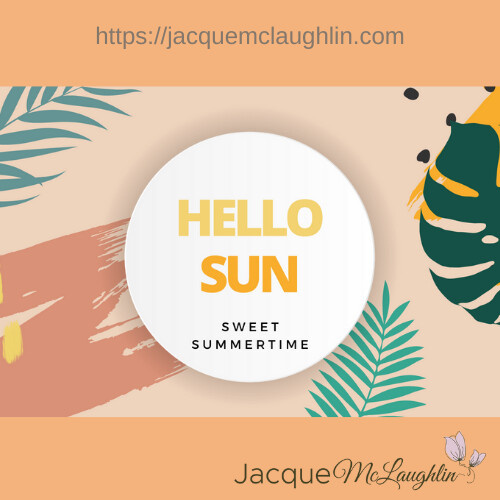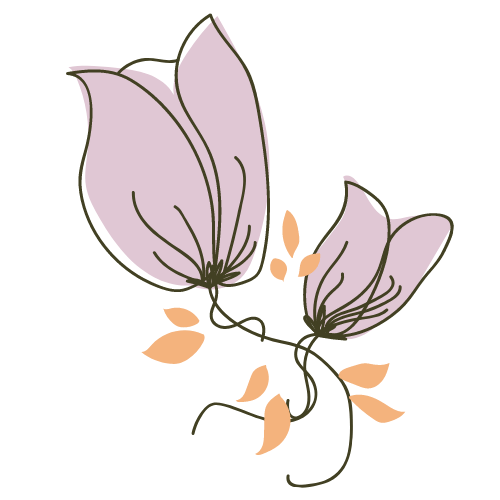
Let's talk about Geranium! Scientific Name: Pelargonium graveolens
Native to southern Africa, geranium—often referred to as "rose geranium"—is cherished for its aromatic foliage and potent therapeutic properties.
Native to southern Africa, geranium—often referred to as "rose geranium"—is cherished for its aromatic foliage and potent therapeutic properties.
Composition & How It Works
Renowned for its sweet floral scent and vibrant green leaves, geranium oil is more than just fragrant—it's a time-tested natural remedy for a variety of skin, emotional, and wellness concerns. This blog explores its most powerful benefits, with special attention to its antifungal properties—backed by scientific research.
If you're wondering what the difference is between Geranium and Geranium bourbon, here you go:
🌿 Geranium (Pelargonium graveolens)
- Aroma: Fresh, green, floral with a slightly herbaceous note.
- Chemistry: Typically higher in citronellol and geraniol, giving it strong antifungal and antibacterial properties.
- Therapeutic Use: Excellent for skin support, antifungal remedies, hormone balance, and emotional calming.
- Cost: Generally more affordable and widely available.
🌺 Geranium Bourbon (Pelargonium graveolens var. roseum)
- Aroma: Sweeter, more refined, and rosy than standard geranium—often considered closer in scent to rose oil.
- Chemistry: Typically has a higher linalool and rose oxide content, which contributes to the rosier aroma and adds slightly more relaxing and skin-soothing properties.
- Therapeutic Use: Especially prized in perfumery, high-end skincare, and aromatherapy for emotional balance.
- Cost: More expensive due to limited growing region and higher demand for its fragrance.
✅ Key Differences at a Glance
| Feature | Geranium | Geranium Bourbon |
|---|---|---|
| Botanical Name | Pelargonium graveolens | P. graveolens var. roseum |
| Scent | Green, sharp floral | Rosier, softer, more refined |
| Region | Egypt, China, India | Réunion Island (Bourbon Island) |
| Main Use | Therapeutic, cleansing, wellness | High-end skincare, perfumery |
| Price | Lower | Higher |
🌟 Which One Should You Use?
- For antifungal, cleansing, and wellness uses → regular Geranium is ideal.
- For luxurious skincare and emotional aromatherapy → Geranium Bourbon offers a sweeter, softer touch.
Both are beautiful and effective oils—so the choice often depends on aroma preference and intended use.
🌸 The Wellness Benefits of Geranium Oil
1. Antifungal Powerhouse
Geranium oil exhibits potent antifungal activity against:
- Candida albicans (yeast infections, oral thrush, fungal rashes)
- Trichophyton rubrum (athlete’s foot, ringworm)
- Aspergillus species (fungal lung irritants)
These effects are attributed to geraniol and citronellol, which disrupt fungal cell membranes and inhibit key enzymes essential for fungal survival.
In vitro studies showed MIC values as low as 0.03 μL/mL against dermatophytes.
2. Mood & Hormone Balance
Geranium’s scent stimulates the limbic system and promotes calm, emotional stability, and hormonal harmony.
A study involving women in labor found inhalation of geranium oil significantly reduced anxiety.
3. Skin Repair & Anti-Aging
Geranium supports collagen production, wound healing, and the reduction of fine lines. Its antioxidant content helps protect skin from environmental stressors.
4. Anti-Inflammatory & Pain Relief
Topical application of geranium oil diluted in carrier oils has shown effectiveness in reducing swelling and calming irritated skin.
💧 How to Use Geranium Oil: Therapeutic Recipes & Blends
🌾 Anti-Fungal Foot Spray (for Athlete’s Foot & Fungal Nails)
A powerful natural remedy to dry out fungal infections and soothe skin.
Ingredients:
- 2 oz witch hazel (or half witch hazel, half distilled water)
- 10 drops Geranium oil
- 8 drops Tea Tree oil
- 5 drops Lavender oil
- Optional: 1 drop Lemongrass oil (for stubborn fungus)
Instructions:
Shake before each use. Spray directly onto clean feet and between toes 2–3 times daily. Let air dry. Continue for 2 weeks after symptoms disappear.
Shake before each use. Spray directly onto clean feet and between toes 2–3 times daily. Let air dry. Continue for 2 weeks after symptoms disappear.
🦶 Fungal Foot Soak Blend
Great for athlete’s foot, toenail fungus, or general foot health.
Ingredients:
- 1 tbsp sea salt or Epsom salt
- 5 drops Geranium oil
- 4 drops Tea Tree oil
- 2 drops Peppermint oil
- 1 tsp apple cider vinegar (optional for pH balance)
Instructions:
Dissolve ingredients into a basin of warm water. Soak feet for 15–20 minutes, 3–4 times per week.
Dissolve ingredients into a basin of warm water. Soak feet for 15–20 minutes, 3–4 times per week.
💁♀️ Hormone Harmony Roll-On
Calming support for mood swings, PMS, or menopause symptoms.
Ingredients:
- 10 mL roller bottle
- 10 drops Geranium oil
- 5 drops Clary Sage
- 5 drops Lavender
- Fill with fractionated coconut oil or grapeseed oil
Instructions:
Apply to wrists, ankles, or lower abdomen. Use daily or during hormonal fluctuation.
Apply to wrists, ankles, or lower abdomen. Use daily or during hormonal fluctuation.
😌 Stress-Relief Diffuser Blend
Grounding and emotionally balancing for moments of stress.
Blend for 200 mL water diffuser:
- 4 drops Geranium
- 3 drops Orange
- 2 drops Frankincense
- 1 drop Patchouli
Diffuse during the day or while winding down in the evening.
🌿 Skin Glow Serum
For mature, dry, or irritated skin.
Ingredients:
- 1 oz jojoba or rosehip seed oil
- 8 drops Geranium
- 5 drops Frankincense
- 3 drops Carrot Seed oil
- 3 drops Helichrysum (optional for scar repair)
Instructions:
Apply 3–5 drops to clean face before bed. Use consistently for best results.
Apply 3–5 drops to clean face before bed. Use consistently for best results.
🧪 Scientific References
- Boukhatem, M.N. et al. (2014). "Antifungal activity of Pelargonium graveolens essential oil against Candida species." Journal of Medical Mycology, 24(4), 263–269.
- Nakamura, C.V. et al. (2004). "In vitro activity of essential oil from Pelargonium graveolens against Candida spp." Brazilian Journal of Microbiology, 35(3).
- Tisserand, R. & Young, R. (2014). Essential Oil Safety: A Guide for Health Care Professionals (2nd Ed.).
- Basim, E. et al. (2000). "Antifungal activity of some essential oils used in Turkish folk medicine." Fitoterapia, 71(4), 658–661.
- Prashar, A. et al. (2006). "Antimicrobial effects of essential oils on Escherichia coli and Staphylococcus aureus." Letters in Applied Microbiology, 43(3), 298–304.
- Heidari, M. et al. (2015). "The Effect of Geranium Aromatherapy on Anxiety in Women During Labor." Iranian Journal of Nursing and Midwifery Research, 20(4), 661–664.
- Akin, M. et al. (2021). "Antioxidant and hepatoprotective activity of Pelargonium graveolens essential oil." Biomedicine & Pharmacotherapy, 138, 111460.
- Shahidi, F. et al. (2015). "Role of phenolics in oxidative stability of edible oils." Journal of the American Oil Chemists' Society, 92, 1419–1425.
- El-Khatib, A.H. et al. (2024). "Protective effects of Pelargonium graveolens oil against cefotaxime-induced nephrotoxicity in rats." Environmental Toxicology and Pharmacology, 93, 104010.
🌺 Final Word
Whether you're drawn to geranium for its beautiful floral aroma or its profound antifungal and skin-healing properties, it truly earns a place in your wellness cabinet. Its versatility makes it suitable for use in skincare routines, diffuser blends, emotional wellness practices, and natural remedies for fungal issues.
Download the Recipes
People often ask me what my favorite YL products are. That really depends on many factors— what may be my favorite today could be different than yesterday, depending on what’s going on in my life. But if you’d like to know the Young Living products I absolutely use every single day, click the button below for My Daily Favorites!
















0 Comments